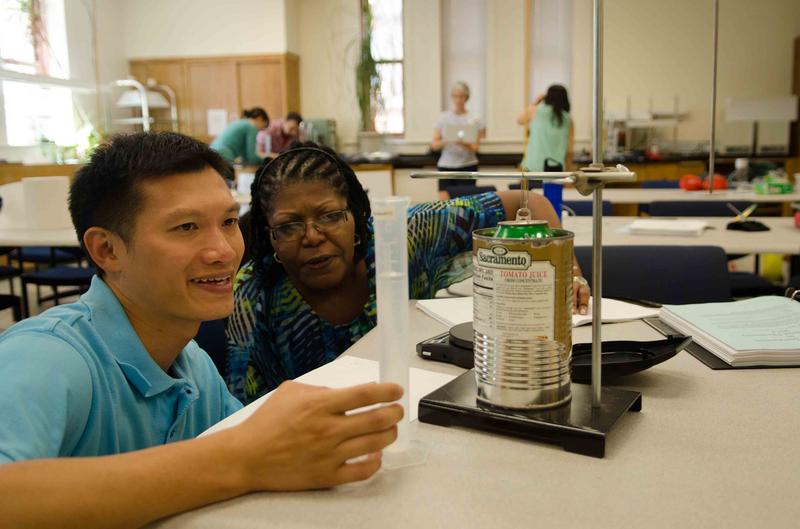
While New York State contemplates adopting the Next Generation Science Standards, about 50 teachers in the region have taken matters into their own hands.
One group of educators participated in a three-week intensive workshop on modeling instruction this summer. The different way of teaching science complies with the new standards by aligning student participation in the classroom more closely to what actual scientists and researchers do in the field.
“Traditional teaching is that the teacher takes control and gives the students all the information,” said Allison Christian, who teaches chemistry and earth science at Celia Cruz Bronx High School of Music. “But modeling is that the students, they will formulate or come to a consensus of their own learning.”
In traditional science classrooms, teachers supply students with a detailed ready-made experiment and leave them to fill in the blanks. With modeling, teachers present the lab equipment and guidance about what kinds of phenomena they should be able to observe — say the relationship between mass and velocity with two weighted carts on a track. It’s up to the students to design and test out an experiment that will explore those variables.
“You get them to quote unquote play with the apparatus or lab equipment,” Richard Premvaree, a physics and robotics teacher at Manhattan/Hunter College High School for the Sciences, said. “But it’s playing with a purpose.”
Still, Premvaree admits, his students may be a little hesitant about modeling.
“Students tend to be more comfortable with getting explicit directions… recipe labs and recipe activities,” he said. “In these kinds of situations they’re kind of figuring out for themselves.”
STEM Teachers NYC, affiliated with Teachers College at Columbia University, has run modeling instruction workshops for three summers and offers weekend workshops throughout the year.
During a recent summer class, teachers paired off into gleeful groups and experimented with toy cars, spaghetti bridges and shadow casting, while testing out scientific concepts like acceleration, conservation of momentum and refraction of light.
“Physics happens all around you,” Dan Berkley, who teaches at the Hudson High School of Learning Tech, said. “It’s about finding ways to bring it into the classroom and about having the students make those linkages.”


